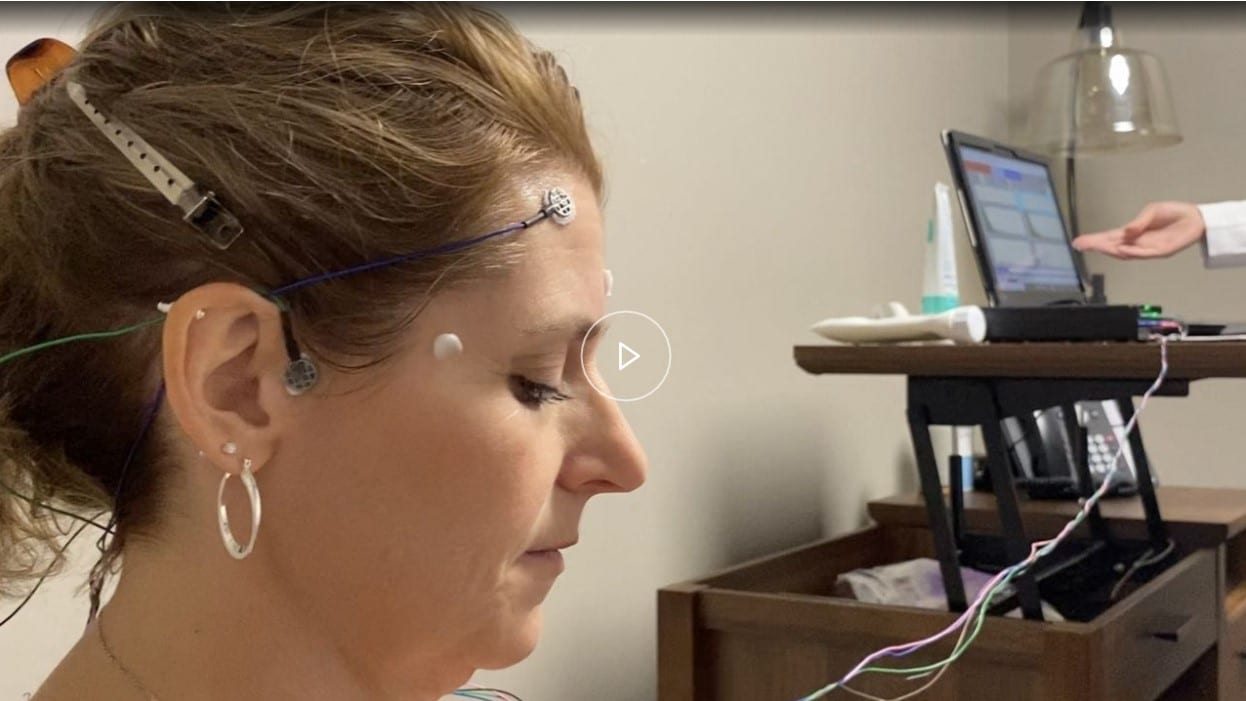
The Spectrum News video can be viewed here.
A Niskayuna-based mental health practice recently introduced two technologies to better help patients.
Center for Solutions has provided mental health services in the Capital Region for more than 10 years. During the pandemic, owner and psychiatric nurse practitioner Tammy LeBlanc began offering hyperbaric oxygen therapy (HBOT) and neurofeedback.
Margaret McMahan first experienced HBOT at Center for Solutions a year and a half ago. As an avid runner, HBOT has helped speed up her recovery time from meniscus surgery and helped get her thyroid issues under control.
It had some other surprising benefits, too.
“My average pace is nine and a half minute miles, and it went down to seven and a half. I felt like my legs just wanted to go,” said McMahan.
An HBOT chamber is pressurized like an airplane. Wearing an oxygen mask inside, a patient gets 100% pure oxygen pushed deep into their cells.
“Undergoing the hyperbaric treatment itself is extremely relaxing and I look forward to it every time,” said McMahan.
HBOT is proven to help lower inflammation — helping physical recovery, but it also aids in improved mental health. That’s the main reason LeBlanc introduced it to her practice.
When a patient isn’t responding well to medication, she’ll order labs to check for inflammation.
“If they do have a higher level of inflammation, I will set them up with treatment with the hyperbaric chamber, and generally we’re trying to get them in for at least 20 hours, then redraw the labs. But I’m seeing their response to medication really start to come around because the inflammation goes down. And that’s basically the etiology for a lot of mental illnesses,” said LeBlanc.
McMahan said she has experienced a greater level of consistent calm throughout her treatment.
“That has improved my life tremendously in all aspects – professional, career wise, parenting, personal relationships and my marriage. That calm has really helped me live a higher quality life,” said McMahan.
Neurofeedback is another therapy added to the practice in the last two years, helping treat patients with anxiety, depression or ADHD.
“The neurons in their brains aren’t firing the way they should be, so when we hook up the neuro feedback, it is stimulating their brain to activate other neurons and create new pathways in their brain,” said certified IASIS technician Sarah Christopher.
Tammy was researching alternate modalities to treat her 12-year-old daughter — who suffers from ADHD and anxiety — when she came across multiple studies about the affects of neurofeedback.
“When I saw those studies, I thought this is something that I want to treat my daughter with, but nobody else in the area had it, so I went to the course, got certified, bought the machine, brought it here and we started implementing it with our patients,” said LeBlanc.
Before stimulation, you’ll typically see high levels of brain activity. Neurofeedback measures the output of different sections of your brain and then sends back information to encourage better functionality.
“So we’re kind of shutting down those racing thoughts, the obsessive thoughts, things like that, and we’re leveling you out,” said Christopher.
The therapy is catered to each person’s needs, usually taking about 15 minutes. All the patient has to do is sit there.
“With my daughter, she’s much calmer, she doesn’t have a lot of social anxiety when she’s going to school at this point, and I was able to get her off of the anxiety medication because she was doing so well. And I was able to lower her ADHD medication by two doses,” said LeBlanc.
There are more than two dozen adult and child patients seeing results from neurofeedback and HBOT at Center for Solutions.
HBOT has also shown promise in treating long-hauler COVID, getting rid of brain fog and bringing back taste and smell.
